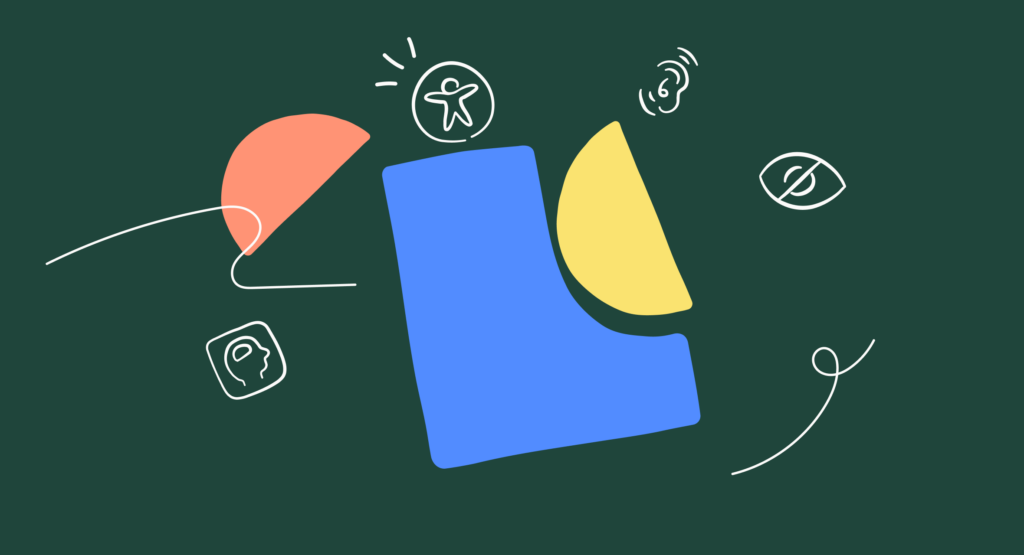Enhancing Web Accessibility
Author
Stephanie Beasse
Date
May 28, 2024

The Plank Approach to Inclusive Digital Spaces
With the internet serving as a central hub for day-to-day interactions and in a lot of cases someone’s livelihood, ensuring web accessibility for all users, including those with disabilities, has never been more crucial.
At Plank, we recognize the profound impact accessible websites can have on individuals’ lives, enabling everyone to participate fully in our digital society. Our dedication to web accessibility stems from a deep belief in equality and inclusivity, driving us to adhere to and exceed Web Content Accessibility Guidelines (WCAG) Level AA standards in every project we undertake.
BLOG: Global Accessibility Awareness Day: What Is Accessibility
The Appeal of Prebuilt Accessibility Tools
As web accessibility has become more demanded and expected by users, a handful of prebuilt accessibility tools have surged in popularity. These platforms offer website owners a seemingly straightforward pathway to enhance accessibility. Unfortunately “accessibility-washing” has become a real issue in this space, with numerous tools offering to “solve a company’s accessibility requirements”, but often to the detriment of the people who need it most.
Accessibility-washing, similar to greenwashing, misleads users by promising that their tool can make your website fully accessible. Tools like AccessiBe & others promise to align websites with accessibility standards through automated code adjustments.
This approach, at first glance, appears to offer a bridge over the complex terrain of web accessibility, ensuring that more websites can cater to the needs of users with disabilities.
Though not entirely bad, they provide many helpful features:
- Quick deployment offers immediate, though partial, accessibility improvements.
- Automated scans help identify and fix some compliance issues, providing a starting point for deeper accessibility integration.
- Enhanced user features, like text size adjustments and keyboard navigation, improve the experience for some users.
The important thing to keep in mind is that these services have a limited ability to personalize and understand the nuances that come with web accessibility.
Understanding the Limitations
Despite their allure, these automated tools come with significant limitations:
- Surface-Level Adjustments: Many tools focus on visible issues, neglecting underlying structural problems that can hinder accessibility.
- One-Size-Fits-All Approach: The diverse needs of users with disabilities are not always adequately addressed by generic solutions.
- Lack of Human Insight: Automated tools cannot replicate the nuanced understanding and empathetic design considerations that human experts bring to the table.
- Legal Compliance: Some of these tools have run into jurisdictional and legal issues as they have not lived up to their promise, leaving the resource in question without adequate legal required accessibility support.
The Plank Perspective on Accessibility
At Plank, we believe that true web accessibility requires more than just ticking boxes for compliance; it demands a thoughtful, user-centred approach. This means considering the full spectrum of human diversity and crafting experiences that are not only technically accessible but also genuinely inclusive and welcoming to everyone.
When to Use Automated Tools
While we caution against sole reliance on prebuilt tools, we acknowledge their potential as part of a broader accessibility strategy. They can serve as interim solutions for legacy systems undergoing gradual accessibility overhauls or as supplementary aids in comprehensive accessibility plans. However, the goal should always be to achieve accessibility through deliberate design and development practices.
Embracing Expertise and Empathy
The pathway to creating truly accessible web experiences is through expertise, empathy, and a deep commitment to inclusivity at every level of the design and development process.
An approach rooted in understanding all the nuances of accessibility standards and integrating these principles from the outset of each project is essential.
We also build websites to our own set of standards based on the knowledge acquired about our client’s users, awareness of all types of disabilities including situational cases (e.g.: a loud music venue preventing a user from hearing sound), and general UX expertise. This combined knowledge is what makes a website truly accessible and inclusive.
Our team of developers, designers, and strategists work collaboratively to ensure that every digital solution we create not only meets but exceeds these expectations.
CASE STUDY: Sounds Like Toronto – Creating an Accessible and Interactive Digital Exhibit
Join Us in Making the Web Accessible to All
We invite you to join Plank in our mission to build a more inclusive digital world. We started our initiative, the Ethical Web Collective, to showcase our commitment and inspire others to strive to make the web a better place.
Beyond accessibility, we believe in protecting our user’s privacy, participating in responsible development, and lowering our environmental impact. To learn more about our commitment and the principles that drive us:
Together, we can transform the landscape of the internet, making it a place where everyone, regardless of their abilities, can thrive.
